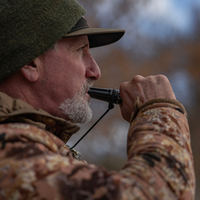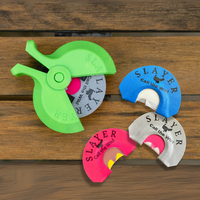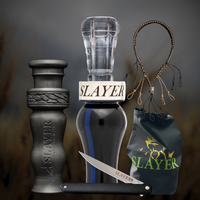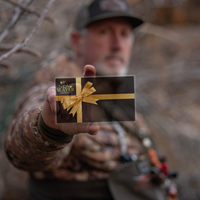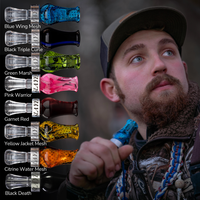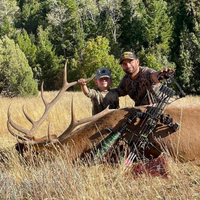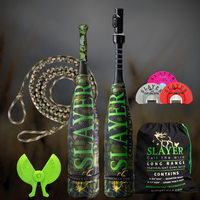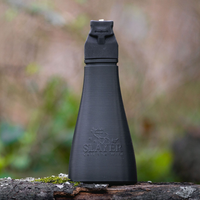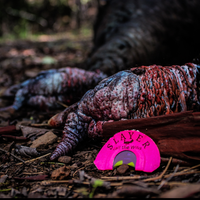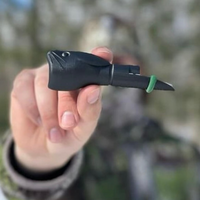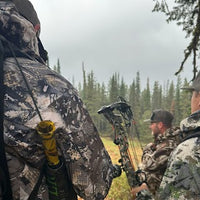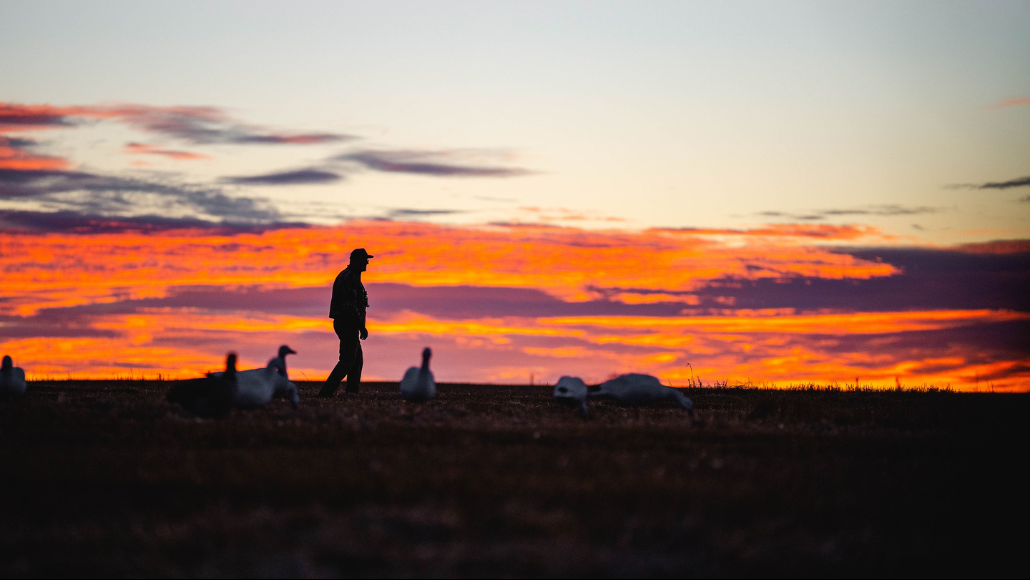Which Is Right for You?
When it comes to duck calls, the reed setup makes all the difference. Whether you’re a first-time caller still learning the ropes or a seasoned waterfowler chasing pressured mallards, deciding between a single reed and a double reed is one of the first choices you’ll face.
Here’s how they stack up — and how Slayer Calls can set you up for success.
What Is a Single Reed Duck Call?
A single reed call has one reed inside the insert. That simple setup makes it more responsive, versatile, and powerful — but also less forgiving.
Pros of a Single Reed
- Wide range of sounds: From sharp hail calls to soft feeding chuckles.
- Louder volume: Perfect for cutting across big water or windy days.
- Fine-tuned control: Experienced hunters can shape tone and pitch for pressured birds.
Cons of a Single Reed
- Steeper learning curve: Beginners may struggle with control.
- Easier to “blow out”: Too much air pressure can cause squeaks or breakovers.
Slayer Pro’s Choice: BEST Single Reeds
The YOLO Bypass Ultimate Hybrid Duck Call is the all-in-one call built for hunters of every skill level. Featuring an innovative straight-frame design and a five-reed tuning system, you can swap reeds on the fly to match your hunting conditions — from soft, subtle quacks in the timber to raspy, high-volume hails over open water. Combining the gritty tone of a traditional cutdown with the consistency of modern acrylic, the YOLO Bypass adapts anywhere you hunt and grows with you season after season.
Alongside the YOLO Bypass, our team of guides and pros also swear by the DUBAR Single Reed Duck Call. Built for hunters who want a crisp, ducky sound with plenty of rasp, the DUBAR is a workhorse in flooded fields, timber, or anywhere mallards get wary. It’s simple to run, easy on air, and tuned to bring realism into every note.
For many hunters, carrying both the YOLO Bypass and the DUBAR gives them the ultimate one-two punch: the versatility of five reeds in one call, plus the consistent, natural rasp of a proven single reed. Shop Slayer’s full line up of single reed duck calls.
What Is a Double Reed Duck Call?
A double reed stacks two reeds together. That second reed acts like a safety net, making the call more forgiving and ducky right out of the box.
Pros of a Double Reed
- Beginner-friendly: Easy to blow, even for first-time callers.
- Natural rasp: Delivers that classic hen mallard sound.
- Forgiving design: Less chance of squeaks or broken notes.
Cons of a Double Reed
- Less range: Won’t stretch as far as a single reed.
- Quieter: Better for close-quarters calling than open water.
Slayer Pro’s Choice: BEST Double Reeds
When it comes to double reed duck calls, the Slayer Pro Team has a few clear favorites that make the cut for beginners and seasoned hunters alike. These calls deliver that classic mallard rasp, are easy to run, and are built tough enough for season after season in the field.
If you’re just starting out, the DUBAR Double Reed is the call we recommend most. It’s forgiving, easy to blow, and tuned with a natural rasp that sounds ducky every time you hit it. Perfect for timber hunts or shallow fields where subtle realism brings birds in close.
When it comes to timber hunts, your call choice often depends on how much air you like to use — and your level of experience. For hunters who are new to calling or who don’t push a lot of air through the call, the Drake Slayer Double Reed is the perfect fit. Easy to blow and incredibly forgiving, this call delivers soft, subtle tones that finish wary ducks right at the decoys. And when you’re ready to step up your game, you don’t need to buy a whole new call — simply swap in a single reed insert and unlock even more range and control.
Don’t overlook the Mallard Reaper. This call has earned stellar reviews from hunters who love its simple, raspy tone and unbeatable price point. It’s proof you don’t need to break the bank to add a reliable double reed to your lanyard.
Which Should You Choose?
- New to calling? Start with a double reed like the DUBAR for easy ducky rasp.
- Want more control? Go with the Drake Slayer single reed for power and versatility.
- Hunt it all? Carry both. Many hunters keep a double reed for timber and a single reed for wide-open water.
Upgrade Options: Inserts & Customization
The best part? With Slayer, you don’t need to buy a whole new call when you’re ready to level up. Swap inserts instead.

- Start with a double reed insert while you’re learning.
- When you’re ready, drop in a single reed insert for advanced calling and more range.
Want to make your call one-of-a-kind? Slayer offers custom engraving — perfect for adding your name, honoring a duck dog, or commemorating a special hunt.

Build Your Skills with Slayer’s “How To” Training
Every call is only as good as the hunter behind it. That’s why we created Call the Wild, Slayer’s step-by-step video series that teaches the fundamentals and advanced techniques to master your call. It’s the fastest way to sound like a seasoned waterfowler.

Ready to Choose?
Shop Slayer’s full lineup of top rated duck calls — all hand-tuned in Idaho, American-made, and built to last a lifetime. Every call is backed by our 100% guarantee: If you’re not obsessed, we’ll make it right.
Frequently Asked Questions
Is a single reed or double reed duck call better for beginners?
A double reed is usually better for beginners. It’s easier to blow, more forgiving, and produces a natural mallard rasp without much practice.
Why would a hunter choose a single reed duck call?
Single reeds offer more range, volume, and control. Experienced callers use them to fine-tune sounds, reach distant birds, and adjust tone depending on conditions.
Can I use a single reed in the timber?
Yes, but most hunters prefer a double reed for timber. The softer, raspy tone of a double reed carries just enough without echoing through the trees.
Which call is louder: single or double reed?
A single reed. Its design produces a sharper, louder tone that cuts through wind and across open water.
Do I need both single and double reed duck calls?
Many hunters carry both. A single reed gives volume and versatility for open water, while a double reed delivers that realistic rasp in close-range setups like timber or flooded fields.

